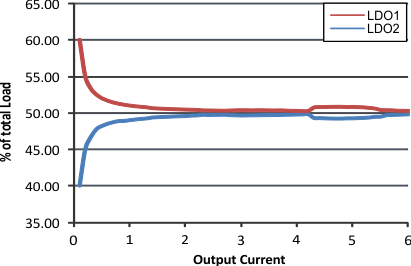SLVU944B October 2015 – October 2020 TPS7H1101-SP
3.3.8 Current Sharing
For demanding load requirements, multiple LDOs can be paralleled.
- In parallel mode CS pin of LDO#1 must be connected to PCL pin of LDO#2 via a series resistor
(3.75 kΩ) and CS pin of LDO#2 must be connected to PCL pin of LDO#1 via series resistor (3.75 kΩ). - In parallel configuration R30 (resistor from PCL to GND) and R23 (resistor from CS pin to VIN) must be left open (unpopulated).
 Figure 3-10 Current Sharing LDO_1 and LDO_2
Figure 3-10 Current Sharing LDO_1 and LDO_2